Photographing the Past While Remembering Mine
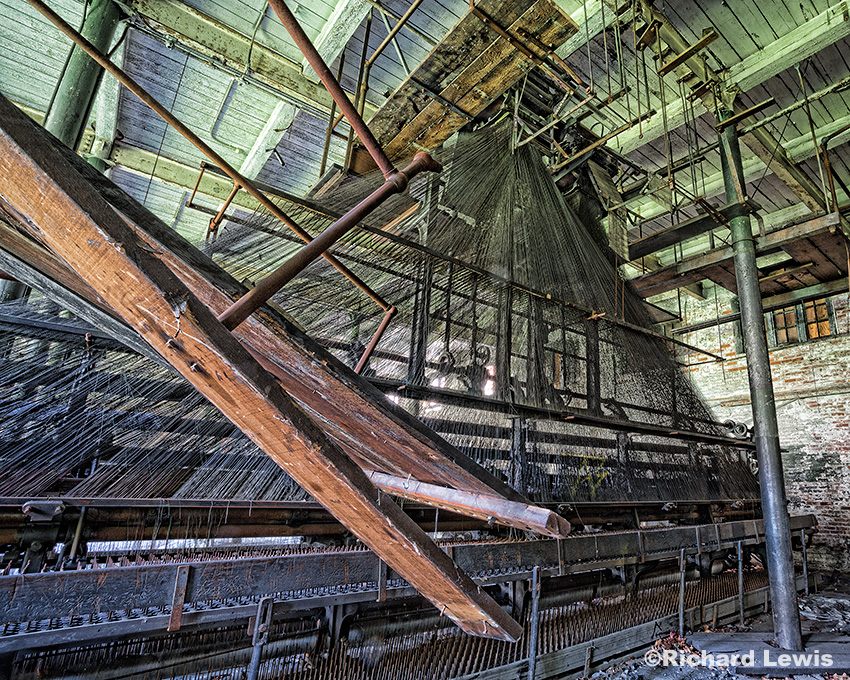
Scranton Lace Company Loom by Richard Lewis 2015
I recently attended a workshop led by one of the master photographers of abandoned places, Matthew Christopher, at the old Scranton Lace Company in Pennsylvania. The Scranton Lace Company was established in the 1890’s and remained in business until 2003. It is a massive, once thriving, complex of factory buildings that are now in various states of decay.
When we walked into the old buildings, I was thrown back into my own past. My father owned a machine shop in a complex of old industrial buildings. My Dad’s company only used a small portion of the property and my brothers and I would explore the vast array of empty buildings. They were big and made strange noises from wind and deterioration. There was also a lot of strange looking old machinery strewn about. All of this added up to one scary and fascinating place for a kid to hang out. Those old memories, fears, and curiosities came flooding back to me when we walked into the Scranton Lace Company.
Reflections
This seemed to be a popular place for our group to photograph because of the reflections from the pooling water on the floor. I was trying to put my own spin on it when I noticed the ripples from the water dripping through the ceiling. Those ripples show this place continues to deteriorate.
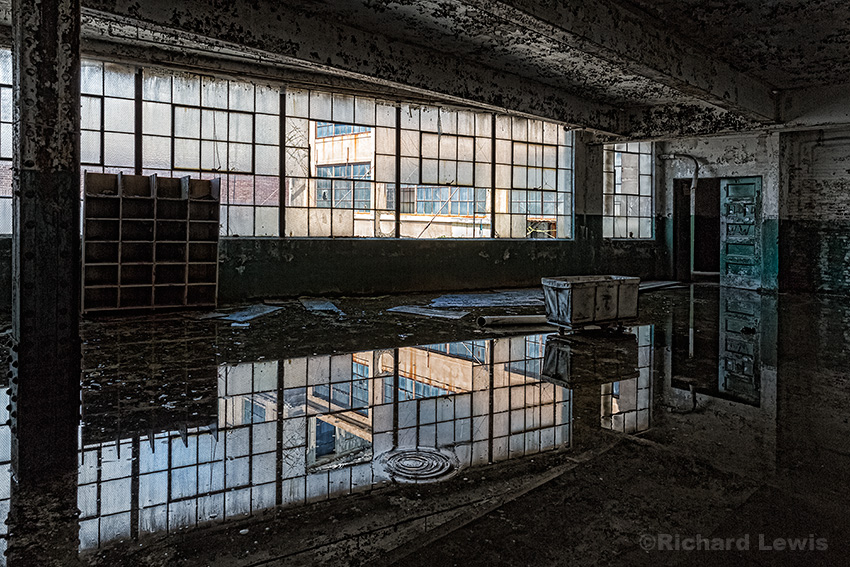
Reflection On The Scranton Lace Company by Richard Lewis 2015
Angles and Lines
While exploring the Scranton Lace Company buildings, I was very drawn to the challenge of finding interesting angles and lines in mostly large, rectangular spaces. The light from a bright sunny day coming through the windows also made for an interesting juxtaposition of bright light and dark shadows.
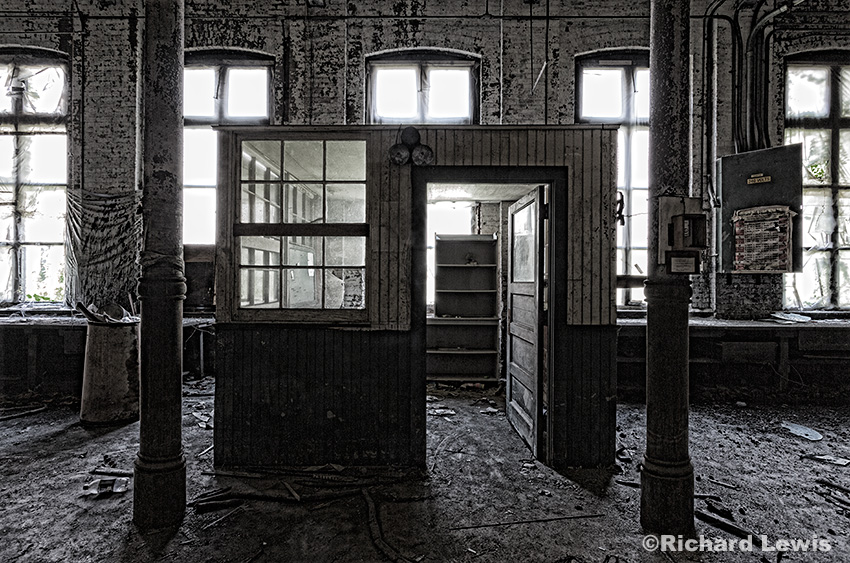
Foreman’s Office 2015 by Richard Lewis
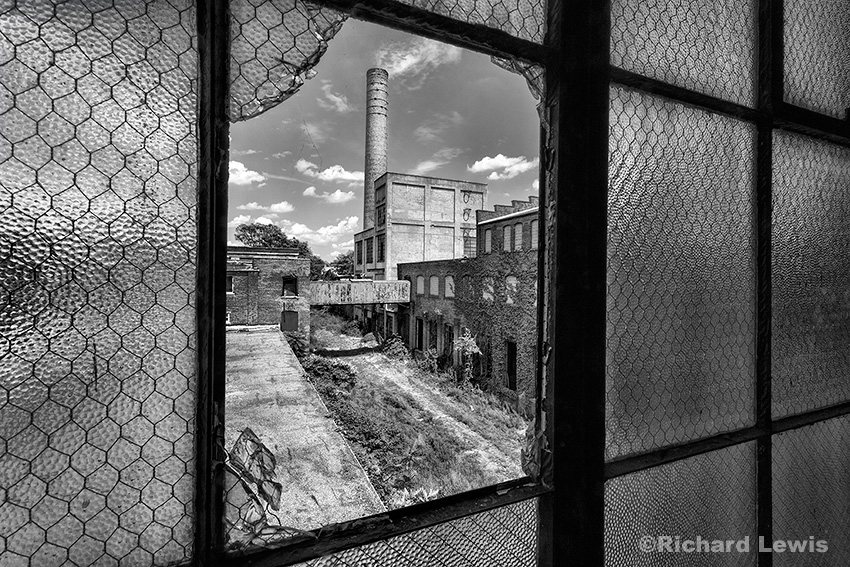
Looking Out At The Scranton Lace Company by Richard Lewis 2015

Once Thriving View by Richard Lewis 2015
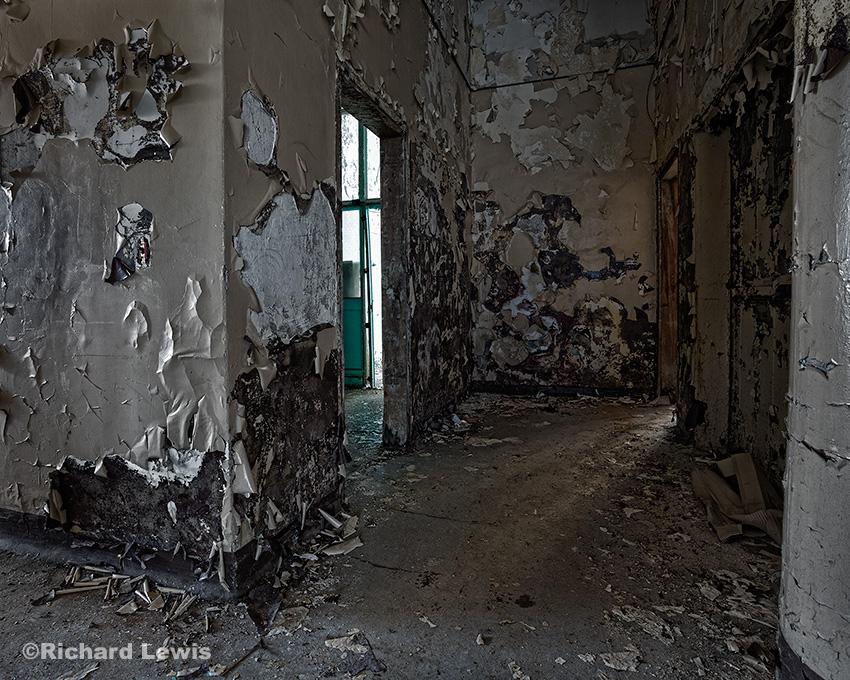
Abandonment In Angles by Richard Lewis 2015
The Rhythm of Debris
In some of the rooms there were different kinds of debris from the business of making lace. I found the patterns and lines they formed to be fascinating and wanted to preserve, in an artistic way, the piles of junk that were once useful items.
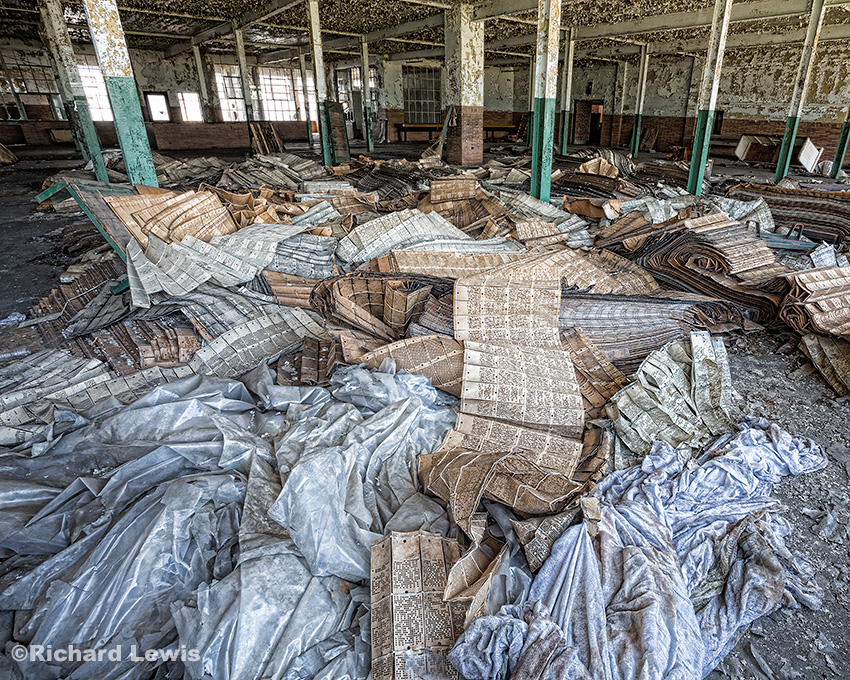
The Remains of Production by Richard Lewis 2015

Ruined Loom Parts by Richard Lewis 2015
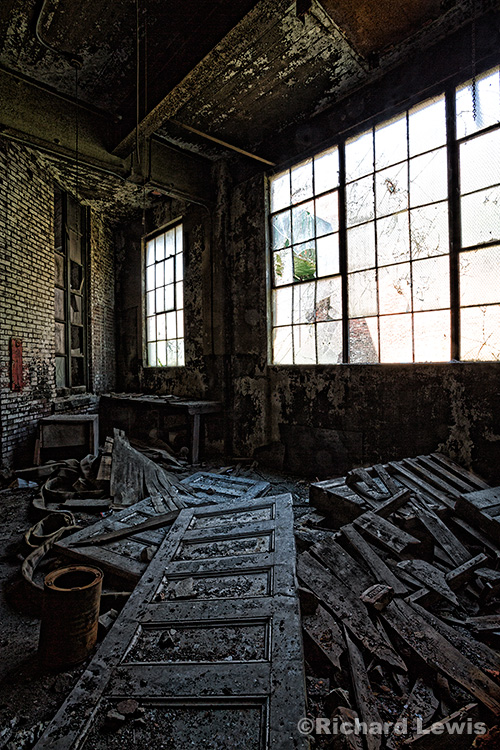
Storage Room at the Scranton Lace Company by Richard Lewis 2015
The Loom
This large loom is the last one of 12 used to make the lace. The loom was made in England and might be the last of its type in the United States.
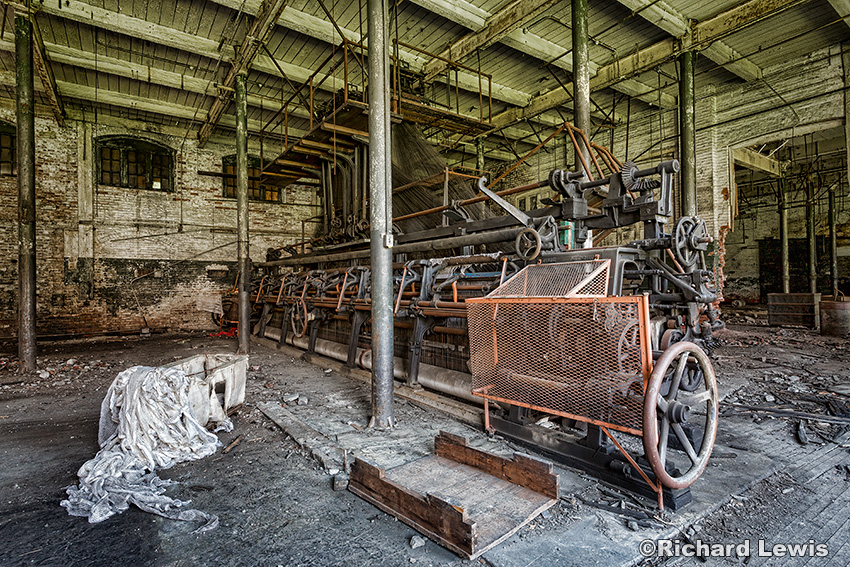
Loom Room Scranton Lace Company by Richard Lewis 2015
Interior Spaces
This complex is nothing but a series of large open rooms. Some were quite unique in their deterioration.
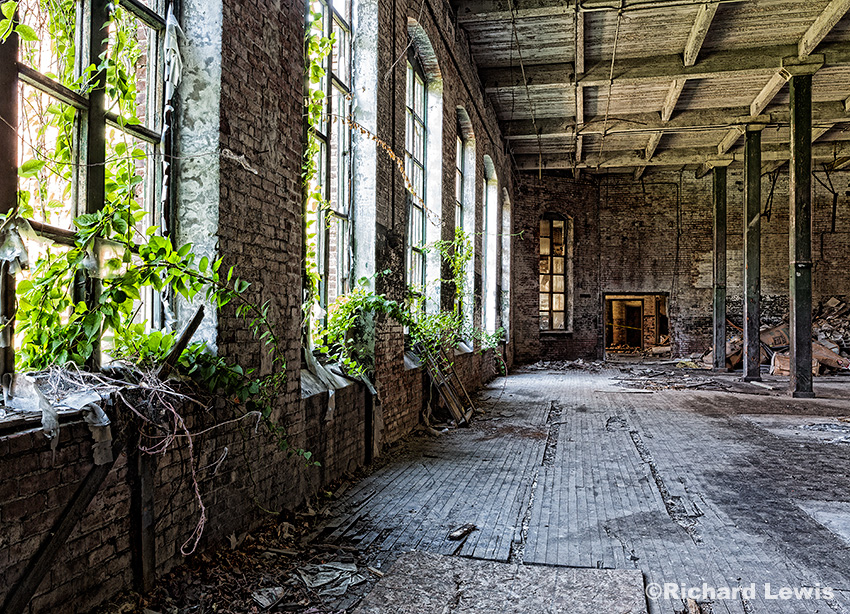
Natural Reclamation Scranton Lace Company by Richard Lewis 2015
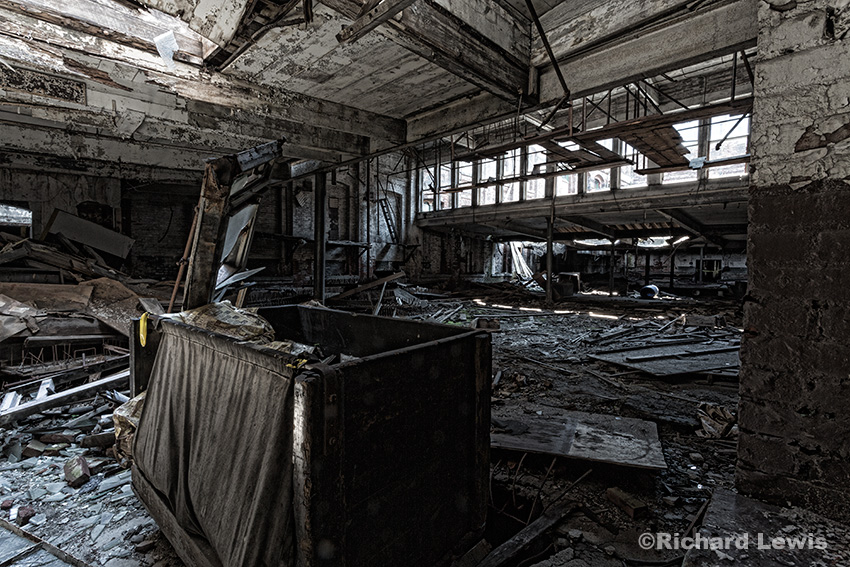
Off Limits by Richard Lewis 2015
The Power Plant
This power plant is at the far end of the Scranton Lace Company complex. I always find it interesting how nature eventually reclaims what humans build.
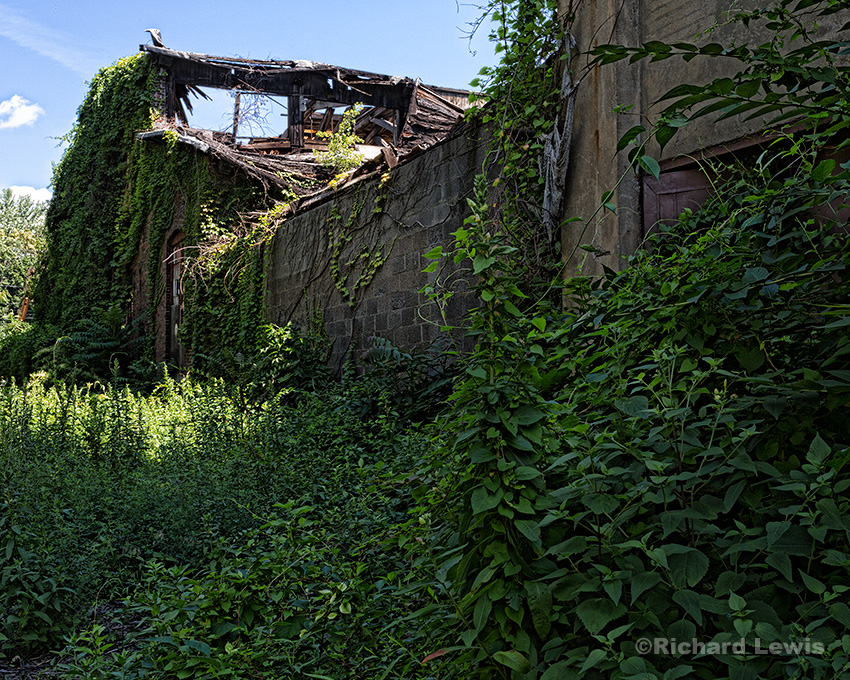
Power Plant at the Scranton Lace Company by Richard Lewis 2015
The Corporate Office
When walking around the corporate offices I wanted to make a statement about the decline of a business. I found some old reports from the 1960’s and 70’s and placed them in the photograph. These reports represented a different time for this office. So what happened to turn a thriving enterprise into a ruin?
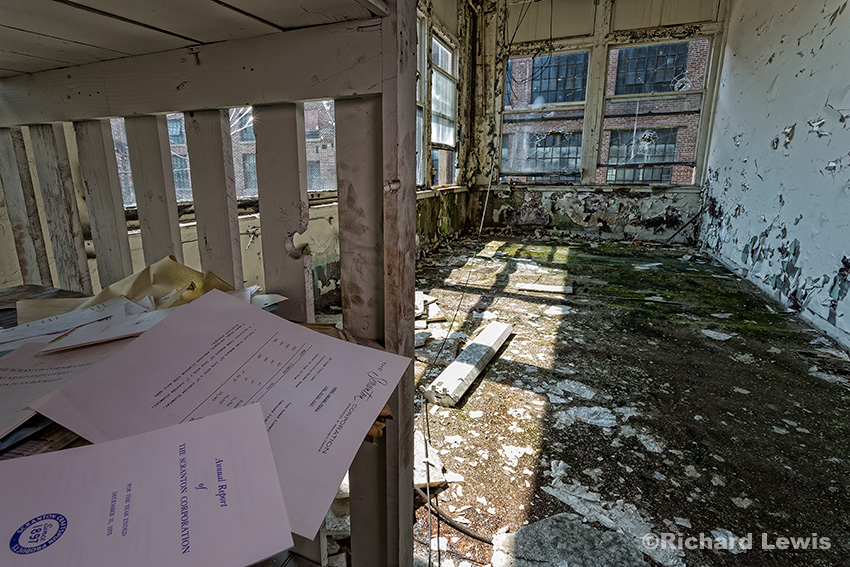
Paperwork From A Better Past by Richard Lewis 2015
Scranton Lace Company by iPhone
I explored this place with an iPhone as well as my big camera. There were some things that just seemed better photographed with the phone.
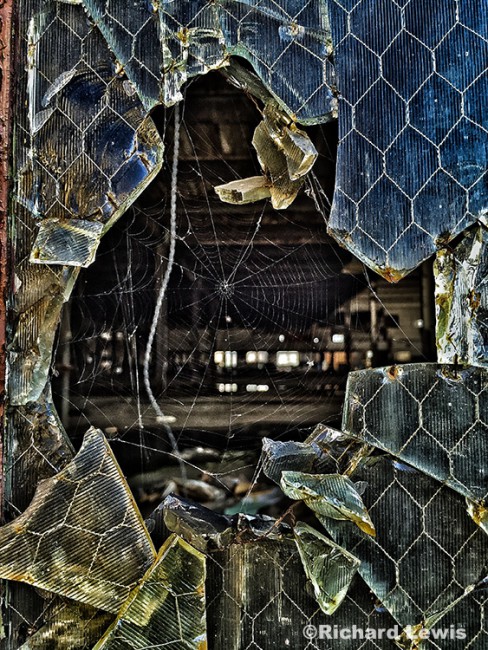
Broken Window at the Scranton Lace Company by Richard Lewis 2015
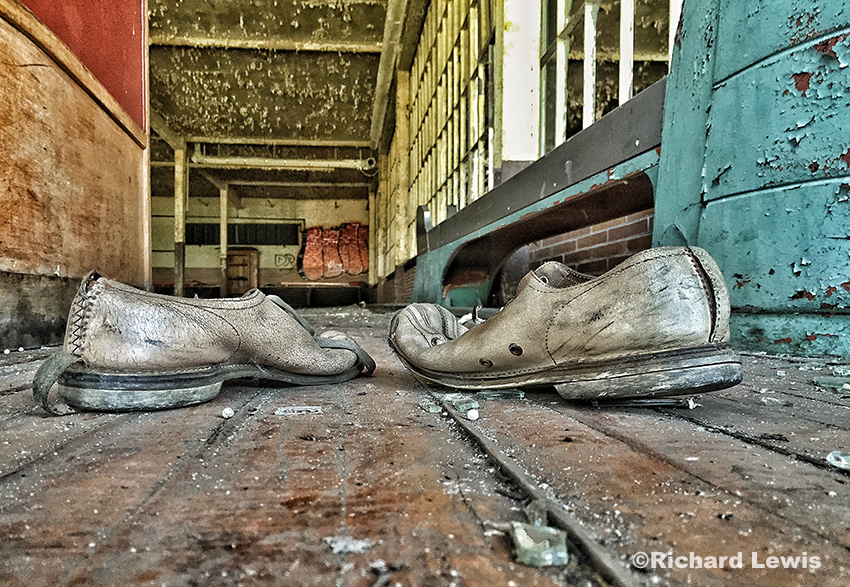
Bowling Shoes at the Scranton Lace Company Bowling Alley by Richard Lewis 2015
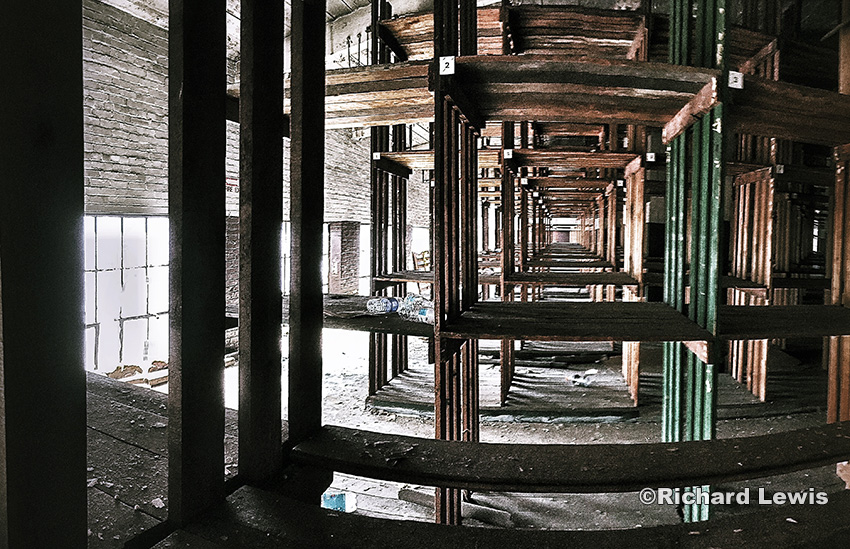
Wooden Shelving at the Scranton Lace Company by Richard Lewis 2015
The Scranton Lace Company was the first industrial site I have photographed since I started seeking out old and abandoned places as subjects. It was amazing how my own industrial past came back to me in these similar old spaces.
Enjoy
Postscript: We were told at the beginning of the workshop that this will be one of the last workshops held here because most of the buildings are slated to be torn down in the Fall of this year. Time marches on.

Wonderful images, as always, Rich
Thanks Derrick, your comments are always appreciated.
What fantastically rich images and a wonderful subject. My favorites are the one of the ripples in the reflection and the bowling shoes. My photos taken with my iPhone are universally sucky despite my being pretty capable with a DSLR which I think just underlines the fact that the skill of the photographer is far more important a factor in the success of an image than the technology used.
Thanks Laura. I appreciate the compliment and agree that this place was a wonderful subject. I’m sorry we are going to lose it. You picked two of my favorite images. IPhone photography is something that requires a little bit of thinking differently. I’ve been lecturing and teaching workshops on the subject. Maybe you can make it to a lecture if I do one close to where you are living. It took me a good 2-1/2 years to figure it out because it all boils down to thinking through the creative process a little differently then we do with our DSLR’s. I’m glad you enjoyed the photos. I hope all is well with you and your family.
Some great images, Rich. And excellent post-processing.
Hi Ben. Nice to hear from you again! Thanks for the compliment. It means a lot coming from you.
Gorgeous images, Rich!
Thank you Karen. I appreciate it.
My favorite is the ripples in the reflection as well. It was hard to chose a favorite though, because they are all amazing! I love these. What a great photography trip!
Thanks Erika. The reflection photograph is one of my favorites. It was an amazing trip. It’s not often I feel I covered a place in one day. I guess this was my last chance to photograph it.
Can’t pick a favorite. So many really extraordinary captures. Wish I was able to see all that before they tear it down. Well at least I saw your photos.
Thanks Beth. I guess these and the other photographs of the lace company will be all that is left soon.
Fascinating and beautiful.
Thanks Pat. That means a lot to me.
Rich, I’m not in to abandoned places photography but this is the nicest review I’ve ever seen. That opening loom shot and the shot looking through the window (both of them) are nifty. Good job.
Thanks Ralph. I’m a bit surprised at producing this amount of work I’m happy with in the few hours I had to do it in. I’m a bit partial to the opening photograph of the loom. I spent a few minutes trying to work around the broken catwalk until I realized that it needed to be in the photograph.
All the photos are amazing, Rich!!! 😀 I really cannot choose a favorite one! They are all so well done, the framing is perfect, all the subjects are interesting… I really have nothing to say, i’ll just sit and enjoy them for a few minutes if you don’t mind 😀
Thank you Alex. Feel free to spend as much time as you like enjoying them. That is what they are here for.
WOWEEE! These are absolutely wonderful in every way… the compositions, colors and processing. This is one place I regret that I was not able to visit before leaving the east coast. If I had to pick a favorite it would be ‘The Remains of Production’.
Thanks Denise. A WOWEE from you is something I’ll cherish. I think it is interesting which photograph you picked as a favorite. When I walked into that room and saw all that stuff, my first thought was that you would love this.
A fantastic post Rich. Tremendous images. Looks like I may have missed my opportunity to shoot at this wonderful location as I think heard it is being closed for good. Yes?
Thanks John. Hearing that our group would be one of the last ones to be able to photograph there was kind of motivating. I’m a newcomer to photographing these old and abandoned places and one thing I’m finding amusing that what we photographers call wonderful locations, others call eyesores.
Nevermind, just read the postscript…
First time visiting your blog. These pictures are amazing. I feel like I am there. You capture the past beautifully.
Thank you Connie for your compliment and taking the time to visit my blog.
I found these entrancing, with the shapes and designs and patterns. Very Cool. 🙂
Thanks Debi. One of the things I like the most about abandoned places and architecture in general are the patterns, shapes and textures.
🙂
Hillary Clinton mentioned the Lace Company in her acceptance speech last night. Her grandfather worked there all his life, and he father worked there for a short time.
In reviewing these images again I noticed that in Remains of Production you can see a belt of the punched wood “cards”, the holes in which determined the stitches that would be made in looming a continuous fabric such as lace. That kind of loom and the cards were the 1801 invention of Joseph Marie Jacquard, hence the Jacquard Loom. The “punched card” concept, of course, is what Thomas Watson exploited in his early TAB machines.
Thanks for the historical information, especially about the workings of the looms. My father ran a machine shop so I’ve always had an interest in the workings of machines, especially older ones before computers took over their operations.